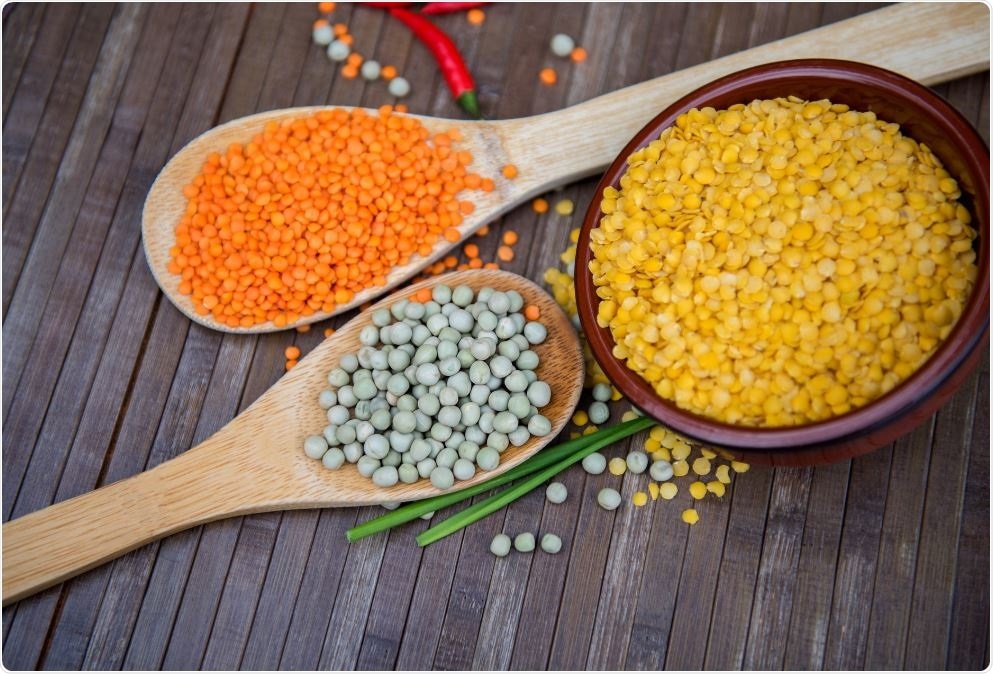As millions of people face hunger across the world, new properties of leading edible plants that could improve future food crop production are looked into by the researchers of Flinders University.

Image Credit: Pixabay
The new research, with Australian and international partners, independently investigates the way in which legumes use a substitute “respiration” as a response to stress—and the way the common pulse crop gets strength in a “ménage à trois”—a three-way relationship with soil and root systems.
The deterioration of food security and nutrition for people worldwide with the political conflict, economic downturns, and pandemic, worsening supply chain problems due to climate change is included in UN’s Food and Agricultural Organization’s forecasts for 2030.
The recent Flinders University studies open potential new roads to grow faster-growing crops with improved resistance to stresses like heat, drought, and salinity at a point where climate change and extremes are causing stress on essential food production.
In the first study, Flinders University specialists concentrated on the complicated processes that legumes have to undergo to gain a backup or respiration substitute. Dr Crystal Sweetman, the first author of the study, says that this could serve in the same way as an antioxidant, which prevents damage in stress or complicated conditions. The study was published in Frontiers in Plant Science.
Alternative respiration is quite different between crops such as legumes and cereals, because different plants contain different versions of alternative respiration genes and proteins. This means that some plants can fine-tune their stress response more efficiently than others.
Dr Crystal Sweetman, Study First Author and Lecturer, Flinders University
Dr Crystal Sweetman adds, “There can also be variation within populations of the same species, making this an interesting candidate for breeding new varieties of crops with improved tolerance to heat, drought, salinity, and other stresses. And that is our ultimate goal with this research.”
In another article, Flinders scientists concentrated on how legume plants enlist aid the favorable micro-organisms in the soil to enhance development and stress tolerance. The recent investigation of the “tripartite” symbiosis in chickpea plants proceeds with a long-running examination into actinobacteria, which increase rhizobial root N-fixing capacities in chickpea development and grain production. This article was published in Plant and Soil.
Professor Chris Franco, a senior researcher, states the research is crucial to gain understanding into better management of chickpea yield when flexible nutrients, soil pH, moisture, and hotter weather are ever more common in Australia, which is the world’s second-biggest chickpea producer after India.
Along with nitrogen-fixing rhizobia, legume roots can also be supported by common soil microbes or actinobacteria, which occur in different measures in soils and also within the plant. In fact, our research confirms that this vital symbiosis between legume and rhizobium is actually a ménage à trois with these actinobacteria which paves the way for development of more effective inoculants to maximise growth.”
Chris Franco, Professor and Senior Researcher, Flinders University
“This is important to developing better soil and growing conditions for premium chickpea production in a very sustainable manner,” stated Professor Chris Franco.
Source:
Journal references:
- Sweetman, C., et al. (2022) Legume Alternative Oxidase Isoforms Show Differential Sensitivity to Pyruvate Activation. Frontiers in Plant Science. doi.org/10.3389/fpls.2021.813691.
- Xu, T., et al. (2022) Revealing the underlying mechanisms mediated by endophytic actinobacteria to enhance the rhizobia chickpea (Cicer arietinum L.) symbiosis. Plant and Soil. doi.org/10.1007/s11104-022-05335-2.